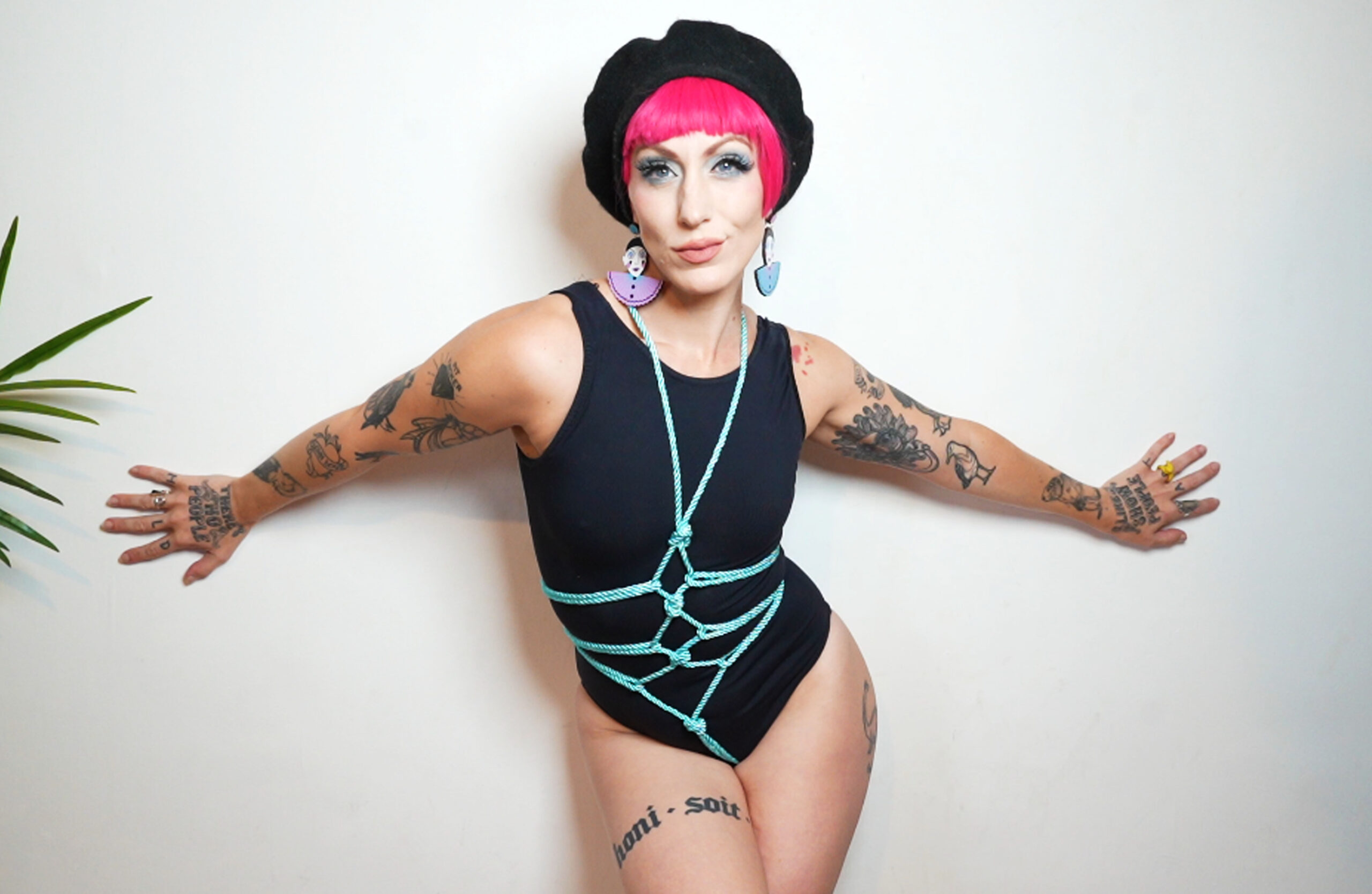Understanding Graysexuality
Understanding graysexuality is essential for fostering respectful relationships and promoting inclusivity within our communities. Graysexuality exists on a spectrum of sexual attraction, falling between asexual and heterosexual identities. Individuals identifying as graysexual may experience varying levels of sexual desire, often fluctuating or situational in nature. This article explores the nuances of graysexuality, providing insights into how to identify it and cultivate meaningful connections with individuals who identify this way.
Defining Graysexuality
Graysexuality is a sexual orientation that exists on a spectrum between asexual and heterosexual. Individuals who identify as graysexual experience sexual attraction, but it may be less frequent or intense than those who identify as heterosexual. It’s important to remember that graysexuality is not a temporary phase or a choice; it’s a valid and enduring aspect of an individual’s identity.

Experiences within the graysexual community are diverse, with some individuals experiencing sexual desire occasionally, while others may only feel it in certain situations or with specific partners. There isn’t a single “right” way to be graysexual, and understanding this fluidity is crucial for respectful interactions.
Characteristics and Experiences of Graysexual Individuals
One key characteristic of graysexuality is the fluctuation in sexual desire. Unlike asexual individuals who experience little to no sexual attraction, graysexual people may feel varying levels of desire that can change over time or depending on the context.
Another important aspect is understanding that graysexual individuals don’t necessarily seek out physical intimacy frequently or exclusively. Some may engage in sexual activity occasionally or only with particular partners who they have a strong emotional connection with. It’s essential to approach conversations about sex and intimacy with sensitivity and respect for their preferences.
Ultimately, the best way to understand and connect with graysexual individuals is through open and honest communication. Ask questions respectfully, listen attentively to their experiences, and remember that every individual’s journey is unique.
Spectrum vs. Binary Thinking
Understanding graysexuality is essential for fostering respectful relationships and promoting inclusivity within our communities. Graysexuality exists on a spectrum of sexual attraction, falling between asexual and heterosexual identities. Individuals identifying as graysexual may experience varying levels of sexual desire, often fluctuating or situational in nature.
It’s important to move away from binary thinking when discussing sexual orientation. Instead of viewing sexuality as simply “straight” or “gay,” we need to acknowledge the diverse range of experiences that exist on a spectrum. This includes recognizing that graysexuality is a valid and distinct identity, separate from both asexual and heterosexual orientations.
Understanding this spectrum helps us create a more inclusive environment where individuals feel comfortable expressing their true selves without fear of judgment or misunderstanding. It encourages empathy and respect for the unique experiences of others.
Identifying Potential Graysexuality
Recognizing the diverse spectrum of human sexuality is crucial for building respectful and inclusive communities. Graysexuality, a sexual orientation that exists between asexual and heterosexual identities, deserves understanding and acknowledgment. Individuals identifying as graysexual experience varying levels of sexual attraction, often fluctuating or situational in nature.
Self-Reflection and Honesty
Identifying potential graysexuality involves self-reflection and honest introspection about one’s own experiences with sexual attraction. It requires questioning societal norms and expectations surrounding sexuality. If you find yourself experiencing sexual attraction inconsistently or situationally, it might be worth exploring whether graysexuality resonates with your identity.
Pay attention to the intensity and frequency of your sexual desires. Do they fluctuate significantly over time? Are there specific circumstances or individuals that trigger or dampen your desire? These patterns could indicate a graysexual experience.
Honesty is crucial during this process. Don’t be afraid to challenge preconceived notions about sexuality and explore what feels authentic to you. It’s essential to acknowledge your feelings and experiences without judgment, allowing yourself the space to discover your true orientation.
Remember, there is no right or wrong way to be graysexual. Individuals within this community express their identities in diverse ways. What matters most is finding what resonates with you and living authentically.
Recognizing Your Desires and Preferences
Identifying potential graysexuality involves self-reflection and honest introspection about one’s own experiences with sexual attraction. It requires questioning societal norms and expectations surrounding sexuality. If you find yourself experiencing sexual attraction inconsistently or situationally, it might be worth exploring whether graysexuality resonates with your identity.
Pay attention to the intensity and frequency of your sexual desires. Do they fluctuate significantly over time? Are there specific circumstances or individuals that trigger or dampen your desire? These patterns could indicate a graysexual experience.

Honesty is crucial during this process. Don’t be afraid to challenge preconceived notions about sexuality and explore what feels authentic to you. It’s essential to acknowledge your feelings and experiences without judgment, allowing yourself the space to discover your true orientation.
Remember, there is no right or wrong way to be graysexual. Individuals within this community express their identities in diverse ways. What matters most is finding what resonates with you and living authentically.
Exploring the Range of Sexual Attraction
Understanding graysexuality is essential for fostering respectful relationships and promoting inclusivity within our communities.
- Graysexuality exists on a spectrum of sexual attraction, falling between asexual and heterosexual identities.
- Individuals identifying as graysexual may experience varying levels of sexual desire, often fluctuating or situational in nature.
Identifying potential graysexuality involves self-reflection and honest introspection about one’s own experiences with sexual attraction.
- It requires questioning societal norms and expectations surrounding sexuality.
- If you find yourself experiencing sexual attraction inconsistently or situationally, it might be worth exploring whether graysexuality resonates with your identity.
- Pay attention to the intensity and frequency of your sexual desires. Do they fluctuate significantly over time? Are there specific circumstances or individuals that trigger or dampen your desire? These patterns could indicate a graysexual experience.

Honesty is crucial during this process. Don’t be afraid to challenge preconceived notions about sexuality and explore what feels authentic to you. It’s essential to acknowledge your feelings and experiences without judgment, allowing yourself the space to discover your true orientation.
Remember, there is no right or wrong way to be graysexual. Individuals within this community express their identities in diverse ways. What matters most is finding what resonates with you and living authentically.
Respectful Communication and Relationships
Respectful communication is the foundation of healthy relationships. It involves treating others with kindness, empathy, and consideration for their feelings and boundaries. When interacting with individuals who identify as graysexual, it’s important to approach conversations about sex and intimacy with sensitivity and respect for their preferences.
Using Inclusive Language
Respectful communication is the foundation of healthy relationships. It involves treating others with kindness, empathy, and consideration for their feelings and boundaries. When interacting with individuals who identify as graysexual, it’s important to approach conversations about sex and intimacy with sensitivity and respect for their preferences.
Avoid making assumptions or generalizations about their sexual desires or experiences. Remember that every individual is unique, and their expression of graysexuality may vary.
Use inclusive language that affirms their identity. Instead of using outdated or dismissive terms, use language that reflects their self-identified orientation.
Listen actively when they share their perspectives on sexuality and intimacy. Create a safe space for them to express themselves without fear of judgment or pressure.
Be open to learning more about graysexuality and expanding your understanding of human sexuality. Engage in respectful dialogue and ask clarifying questions if needed, demonstrating your willingness to learn and grow.
Above all, treat individuals who identify as graysexual with the same respect and dignity that you would extend to anyone else.
Understanding Consent and Boundaries
Understanding consent and boundaries is crucial for establishing healthy and respectful relationships. Consent is an ongoing process of communication and agreement throughout any interaction, particularly when it comes to sexual activity.
It’s essential to remember that consent can be withdrawn at any time, even if it was given previously. Respecting someone’s boundaries means honoring their wishes and decisions regarding physical intimacy and emotional expression.
When interacting with individuals who identify as graysexual, it’s important to approach conversations about sex and intimacy with sensitivity and respect for their preferences.
Open and honest communication is paramount. Ask questions respectfully and create a safe space where they feel comfortable sharing their desires and limits.
Remember that graysexual individuals may experience fluctuating or situational sexual desire, so it’s crucial to check in regularly and ensure continued consent throughout any interaction.
Never pressure or coerce someone into engaging in sexual activity if they are not comfortable.
Be mindful of their body language and verbal cues, and respect their decisions even if they differ from your expectations.
Understanding graysexuality involves recognizing that it’s a valid and diverse sexual orientation that deserves respect and understanding.
Building Trust and Open Dialogue
Understanding graysexuality is essential for fostering respectful relationships and promoting inclusivity within our communities. Graysexuality exists on a spectrum of sexual attraction, falling between asexual and heterosexual identities. Individuals identifying as graysexual may experience varying levels of sexual desire, often fluctuating or situational in nature.
- Graysexuality is not a temporary phase or a choice; it’s a valid and enduring aspect of an individual’s identity.
- Experiences within the graysexual community are diverse, with some individuals experiencing sexual desire occasionally, while others may only feel it in certain situations or with specific partners.
One key characteristic of graysexuality is the fluctuation in sexual desire. Unlike asexual individuals who experience little to no sexual attraction, graysexual people may feel varying levels of desire that can change over time or depending on the context.
Another important aspect is understanding that graysexual individuals don’t necessarily seek out physical intimacy frequently or exclusively. Some may engage in sexual activity occasionally or only with particular partners who they have a strong emotional connection with. It’s essential to approach conversations about sex and intimacy with sensitivity and respect for their preferences.
Ultimately, the best way to understand and connect with graysexual individuals is through open and honest communication. Ask questions respectfully, listen attentively to their experiences, and remember that every individual’s journey is unique.
Respectful communication is the foundation of healthy relationships. It involves treating others with kindness, empathy, and consideration for their feelings and boundaries. When interacting with individuals who identify as graysexual, it’s important to approach conversations about sex and intimacy with sensitivity and respect for their preferences.
- Avoid making assumptions or generalizations about their sexual desires or experiences.
- Use inclusive language that affirms their identity.
- Listen actively when they share their perspectives on sexuality and intimacy. Create a safe space for them to express themselves without fear of judgment or pressure.
Be open to learning more about graysexuality and expanding your understanding of human sexuality. Engage in respectful dialogue and ask clarifying questions if needed, demonstrating your willingness to learn and grow.
Above all, treat individuals who identify as graysexual with the same respect and dignity that you would extend to anyone else.
Understanding consent and boundaries is crucial for establishing healthy and respectful relationships. Consent is an ongoing process of communication and agreement throughout any interaction, particularly when it comes to sexual activity.
It’s essential to remember that consent can be withdrawn at any adult sex shop time, even if it was given previously. Respecting someone’s boundaries means honoring their wishes and decisions regarding physical intimacy and emotional expression.
When interacting with individuals who identify as graysexual, it’s important to approach conversations about sex and intimacy with sensitivity and respect for their preferences.
Open and honest communication is paramount. Ask questions respectfully and create a safe space where they feel comfortable sharing their desires and limits.
Remember that graysexual individuals may experience fluctuating or situational sexual desire, so it’s crucial to check in regularly and ensure continued consent throughout any interaction.
Never pressure or coerce someone into engaging in sexual activity if they are not comfortable.
Be mindful of their body language and verbal cues, and respect their decisions even if they differ from your expectations.
Understanding graysexuality involves recognizing that it’s a valid and diverse sexual orientation that deserves respect and understanding.
Creating Supportive Environments
Creating supportive environments for individuals who identify as graysexual is crucial for fostering inclusivity and respect. Understanding their experiences, preferences, and communication styles is essential for building meaningful connections. Remember, empathy and open-mindedness are key to creating a space where everyone feels comfortable expressing themselves authentically.
Educating Yourself About Asexuality and Related Identities
Creating supportive environments starts with education and awareness. Learning about graysexuality helps dismantle stereotypes and misconceptions surrounding sexual orientation.
Engaging with resources, articles, and communities dedicated to asexual and graysexual experiences can broaden understanding and foster empathy.
Open communication is paramount in building supportive relationships. Creating a safe space for individuals to express their identities and experiences without fear of judgment is essential. Actively listening and respecting their perspectives fosters trust and strengthens connections.
Avoiding assumptions and generalizations about graysexuality is crucial. Every individual’s experience with graysexuality is unique, so approaching conversations with curiosity and a willingness to learn is important.
Respecting boundaries and consent is fundamental in any relationship, particularly when navigating discussions about intimacy. Graysexual individuals may have fluctuating or situational desires, so clear communication and ongoing consent checks are vital.
Celebrating diversity within the LGBTQIA+ community is essential for creating an inclusive environment. Acknowledging and valuing the spectrum of sexual orientations, including graysexuality, fosters a sense of belonging and acceptance for all individuals.
Challenging Stigmas and Misconceptions
Creating supportive environments starts with education and awareness. Learning about graysexuality helps dismantle stereotypes and misconceptions surrounding sexual orientation. Engaging with resources, articles, and communities dedicated to asexual and graysexual experiences can broaden understanding and foster empathy.
Open communication is paramount in building supportive relationships. Creating a safe space for individuals to express their identities and experiences without fear of judgment is essential. Actively listening and respecting their perspectives fosters trust and strengthens connections.
Avoiding assumptions and generalizations about graysexuality is crucial. Every individual’s experience with graysexuality is unique, so approaching conversations with curiosity and a willingness to learn is important.
Respecting boundaries and consent is fundamental in any relationship, particularly when navigating discussions about intimacy. Graysexual individuals may have fluctuating or situational desires, so clear communication and ongoing consent checks are vital.
Celebrating diversity within the LGBTQIA+ community is essential for creating an inclusive environment. Acknowledging and valuing the spectrum of sexual orientations, including graysexuality, fosters a sense of belonging and acceptance for all individuals.
Promoting Inclusivity in Social Settings and Communities
Creating supportive environments for individuals who identify as graysexual is crucial for fostering inclusivity and respect. Understanding their experiences, preferences, and communication styles is essential for building meaningful connections. Remember, empathy and open-mindedness are key to creating a space where everyone feels comfortable expressing themselves authentically.
Creating supportive environments starts with education and awareness. Learning about graysexuality helps dismantle stereotypes and misconceptions surrounding sexual orientation. Engaging with resources, articles, and communities dedicated to asexual and graysexual experiences can broaden understanding and foster empathy.
Open communication is paramount in building supportive relationships. Creating a safe space for individuals to express their identities and experiences without fear of judgment is essential. Actively listening and respecting their perspectives fosters trust and strengthens connections.
Avoiding assumptions and generalizations about graysexuality is crucial. Every individual’s experience with graysexuality is unique, so approaching conversations with curiosity and a willingness to learn is important.
Respecting boundaries and consent is fundamental in any relationship, particularly when navigating discussions about intimacy. Graysexual individuals may have fluctuating or situational desires, so clear communication and ongoing consent checks are vital.
Celebrating diversity within the LGBTQIA+ community is essential for creating an inclusive environment. Acknowledging and valuing the spectrum of sexual orientations, including graysexuality, fosters a sense of belonging and acceptance for all individuals.
Line the Studio
Mayfair Design Studio
- Neck Line Filler Treatment Near Ranmore, Surrey - June 4, 2025
- What Is Roaching And How It Impacts Serious Relationships - June 3, 2025
- Navigating Asexual-Romantic Relationships In Today’s World - June 2, 2025

